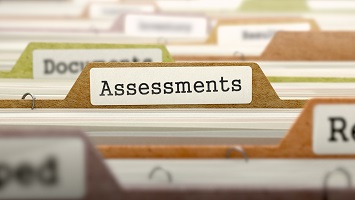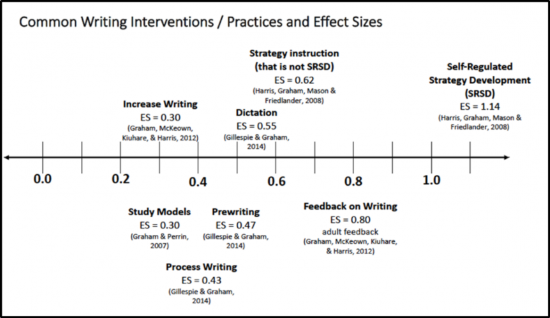About four years ago, I received a text from a colleague asking me how I write IEP goals. “Carefully”, I responded, imagining what lay beneath this seemingly benign query. Soon the discussion turned to the role of the Common Core in the IEP. We debated what IDEA, the Individuals with Disabilities Education Act, intended by stating that IEP goals had to be about “access to the general curriculum” and how to link the content of a student’s IEP to the academic standards for the student’s corresponding grade. Why couldn’t you just write a standard as the goal?, we wondered. With the release of the New York State Special Education Field Advisory (June 2014) on The Role of the Committee on Special Education in Relation to the Common Core Learning Standards, which introduced the concept of the “standards-based IEP” widely across the state, many more teachers are facing the same confusion.
At the RSE-TASC we redesigned our trainings on writing quality IEP goals last year to address this new and puzzling requirement. Here are some of the big ideas we have incorporated:
- Mastery of the Common Core Learning Standards is the expectation for all students. Therefore, all teachers need to know what the standards say students should know and be able to do at their grade levels.
- CSE teams must ensure that they understand an individual student’s present level of performance, and the unique needs of the student resulting from his/her disability. They must then use this information to identify the skills that that student needs to master in order to reach grade level standards.
- The IEP identifies the individual student goals for attaining those skills as well as any necessary adaptations and modifications to the instructional delivery, materials and environment.
In other words, the Common Core Learning Standards are the established outcome to be achieved; the IEP establishes the skills and supports the student needs to achieve those outcomes.
Let’s look at an example:
Reading Standards for Literature 6–12: Determine a theme or central idea of a text and analyze its development over the course of the text; provide an objective summary of the text. (NYS CCLS RL 7.2)
The performance expected in this original standard is threefold: to determine, analyze and summarize the theme. When broken down to the component skills a student must be able to identify a theme like “coming of age” or “abuse of power”; s/he must analyze how the author develops the theme and engages the reader in thinking about it throughout the text; and then s/he must turn that into a summary. For a student with a disability, these skills may be very difficult.
The standards-based IEP might identify adaptations and skills a student needs if s/he cannot perform these skills through conventional reading and writing. The student might need to identify the theme by choosing a picture in an array of three after guided practice with a text read aloud. S/he might need to be taught to use a graphic organizer to identify when and where the theme is developed in the text. The student might need to use pictures to sequence events in a summary frame.
Courtade and Brower in their book, Aligning IEPs to Common Core Standards (2011), state that, to address the student’s needs, educators must collaborate to identify the broad concepts in the ELA and mathematics standards. They then need to identify the component skills required for progress towards those standards and teach them directly to students. They will have to adapt content, instructional methodology, and the way they deliver instruction. The authors note that the goals may identify a first step with a distant connection to the standards; i.e., a need to develop basic reading or math skills, life skills and/or a skill addressed in distinct therapies.
Clearly there is much more to this complex topic than can be fully covered in this article. See the RSE-TASC training calendar on page 2 to register to attend one of our two-day training institutes on writing IEP goals, or explore further on your own using the School Tool on page 3. I am looking forward to a continuing exchange and on-going learning about how we can best support our students with disabilities with educators in our region!
References
Courtade, Ginevra, and Diane M. Browder. Aligning IEPs to the Common Core State Standards: For Students with Moderate and Severe Disabilities. Verona: IEP Resources, 2011. Print.
Holbrook, M.D.. (2007) Standards-based individualized Education Program examples. Alexandria. VA: National Association of State Directors of Special Education (NASDSE), 2007. Also available at http://www.nasdse.org/portals/0/standards-basediepexamples.pdf
Individualized Education Program Guidance: from the NYS Office of Special Education. Accessed 10/08/15 from http://www.p12.nysed.gov/specialed/publications/iepguidance/intro.htm
Lorenzo, J. (2014) The Role of the Committee on Special Education in Relation to the Common Core http://www.p12.nysed.gov/specialed/commoncore/roleofCSE-614.htm




 Data-Driven Decision-Making
Data-Driven Decision-Making  Increasing Post-School Success through Interagency Collaboration
Increasing Post-School Success through Interagency Collaboration  How Can We Improve Deeper Learning for Students with Disabilities?
How Can We Improve Deeper Learning for Students with Disabilities?  Positive Classroom Management: Creating an Environment for Learning
Positive Classroom Management: Creating an Environment for Learning  Self-Determination Skills Empower Students of All Ages
Self-Determination Skills Empower Students of All Ages  Fidelity of Implementation: What is it and Why does it Matter?
Fidelity of Implementation: What is it and Why does it Matter?  Rethinking Classroom Assessment
Rethinking Classroom Assessment  A Three-Step Approach to Identifying Developmentally Appropriate Practices
A Three-Step Approach to Identifying Developmentally Appropriate Practices  Transforming Evidence-Based Practices into Usable Innovations: A Case Study with SRSD
Transforming Evidence-Based Practices into Usable Innovations: A Case Study with SRSD